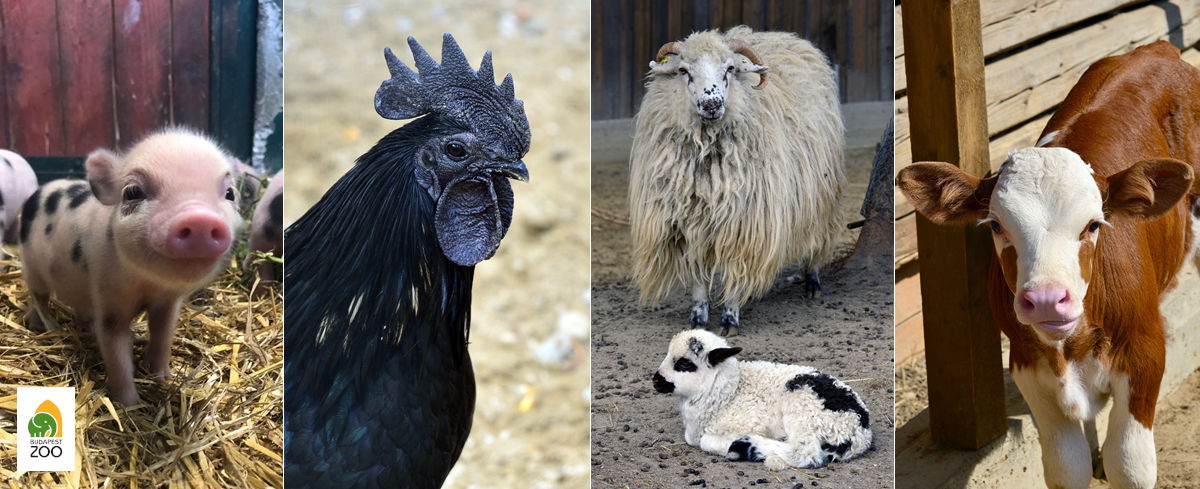Calves, piglets, lambs and others November 5, 2019
 Our zoo is famous for trying to present the widest possible cross-section of biodiversity to its visitors. As such, the general public visiting our institution may encounter a great variety of animals. Most of them are, of course, wild animals in the sense that they are not domesticated, and most may be called exotic because their natural habitat is located in remote landscapes. In addition to the wide variety of exotic wild animals, however, we also present a diverse collection of domestic animals. Most of them may be met by the public at the Once upon a time Castle playground, which opened at our Zoo in the spring of 2018.
Our zoo is famous for trying to present the widest possible cross-section of biodiversity to its visitors. As such, the general public visiting our institution may encounter a great variety of animals. Most of them are, of course, wild animals in the sense that they are not domesticated, and most may be called exotic because their natural habitat is located in remote landscapes. In addition to the wide variety of exotic wild animals, however, we also present a diverse collection of domestic animals. Most of them may be met by the public at the Once upon a time Castle playground, which opened at our Zoo in the spring of 2018.
In the manor of the Once upon a time Castle, one may find, among other things, mangalica pigs, Gyimei racka sheep and Hungarian multicoloured cattle, but there is also a poultry yard with specialties like the all-black ayam cemani hen of Javanese origin. In the meantime, in the Petting Zoo, the public may meet dwarf goats and Cameroon sheep, but we also have Minnesota dwarf pigs, dwarf ducks and, of course, Hucul horses. In fact, even Bactrian camels and alpacas are not absent.
It is by no means a coincidence that we try to introduce such a wide variety of domestic animals to the public visiting us. On the one hand, because domestic animals have played a very important role in the history of mankind, and may even be said to have had a history-making influence, nowadays however the general public is less and less aware of these animals. For the inhabitants of cities, farm animals are almost exotic, and it is not uncommon for children not to know that milk is not produced in a brick-shaped box. Because of the above, zoos around the world consider it important that domestic animals are given suitable prominence in presentations, and in the institution's educational activities in general This is also the case in our Zoo. The only difference is that while the international zoo industry started to talk about the importance of presenting domestic animals in the 1960s and 1970s, our former high-profile director, Adolf Lendl, made this an important goal as early as 1909, about half a century ahead of his time.
Because of the above, our zoo has a century-old tradition of working with domestic animals, including our horse-related work or the heritage conservation work, which involved the rescue of many indigenous breeds threatened with permanent extinction a few decades ago. Among other things, our institution has played a key role in the preservation of the Hungarian grey cattle, the Hucul horse and several Hungarian dog breeds.